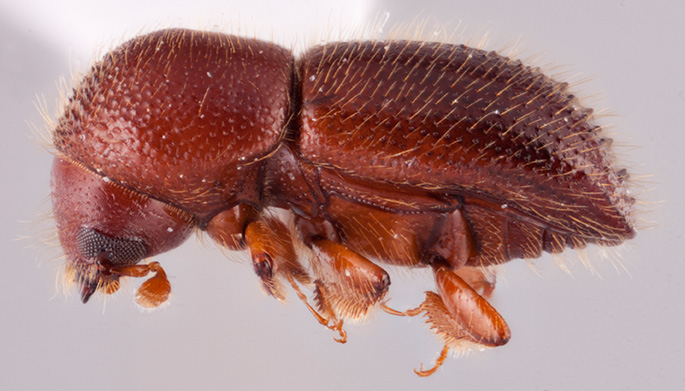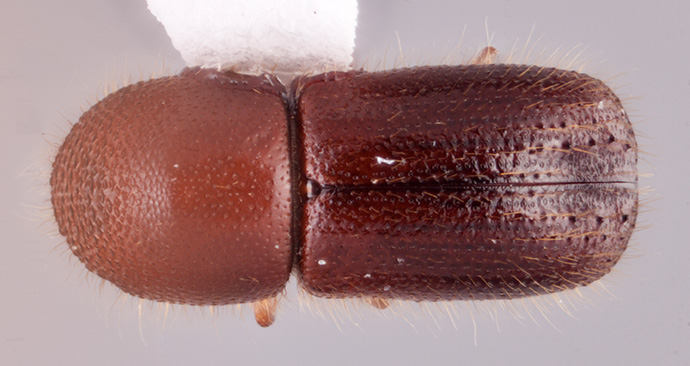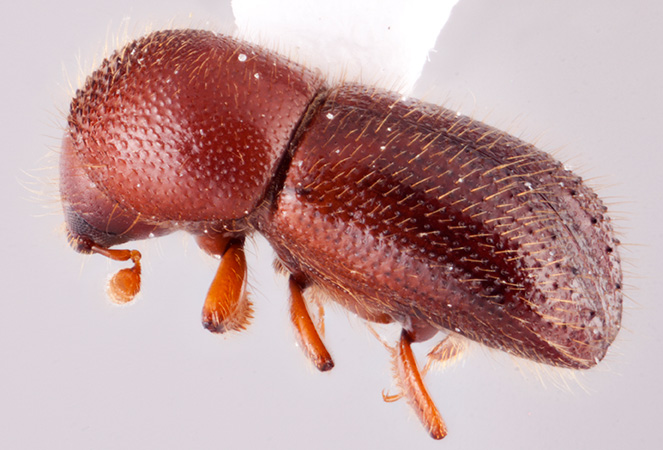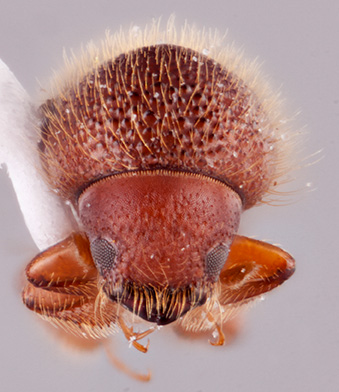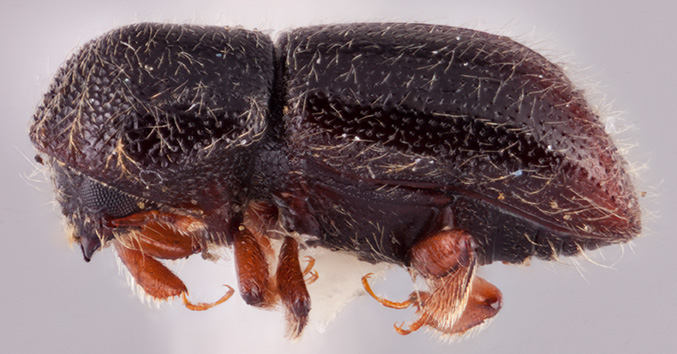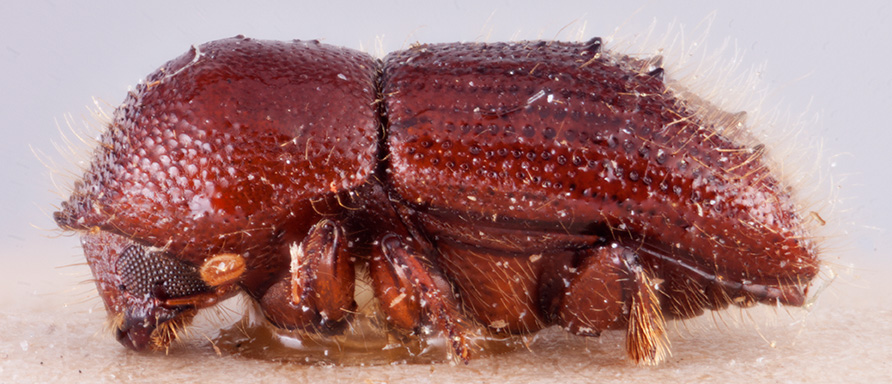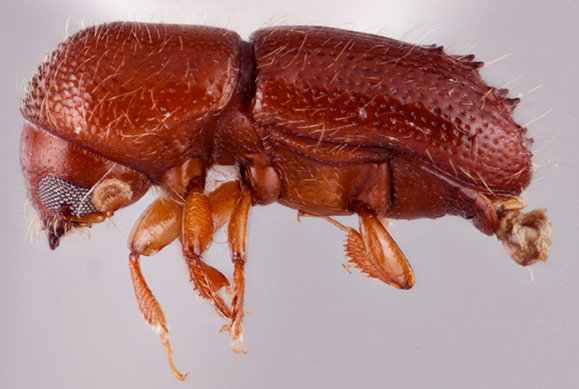Ambrosiophilus
|
Ambrosiophilus osumiensis; R.K. Osborn |
|
Ambrosiophilus osumiensis; R.K. Osborn |
|
Ambrosiophilus osumiensis; R.K. Osborn |
|
Ambrosiophilus osumiensis; R.K. Osborn |
|
Ambrosiodmus atratus; R.K. Osborn |
|
Ambrosiodmus latisulcatus; R.K. Osborn |
|
Ambrosiodmus sexdentatus; R.K. Osborn |
Taxonomy
Ambrosiophilus Hulcr and Cognato, 2009: 21.
Diagnosis
1.95−4.5 mm long, stout to elongate (2.27−2.92 times as long as wide) with elytralelytral:
pertaining to the elytra
apexapex:
point or edge furthest from the body; opposite of base
 rounded and entireentire:
rounded and entireentire:
without marginal teeth or notches
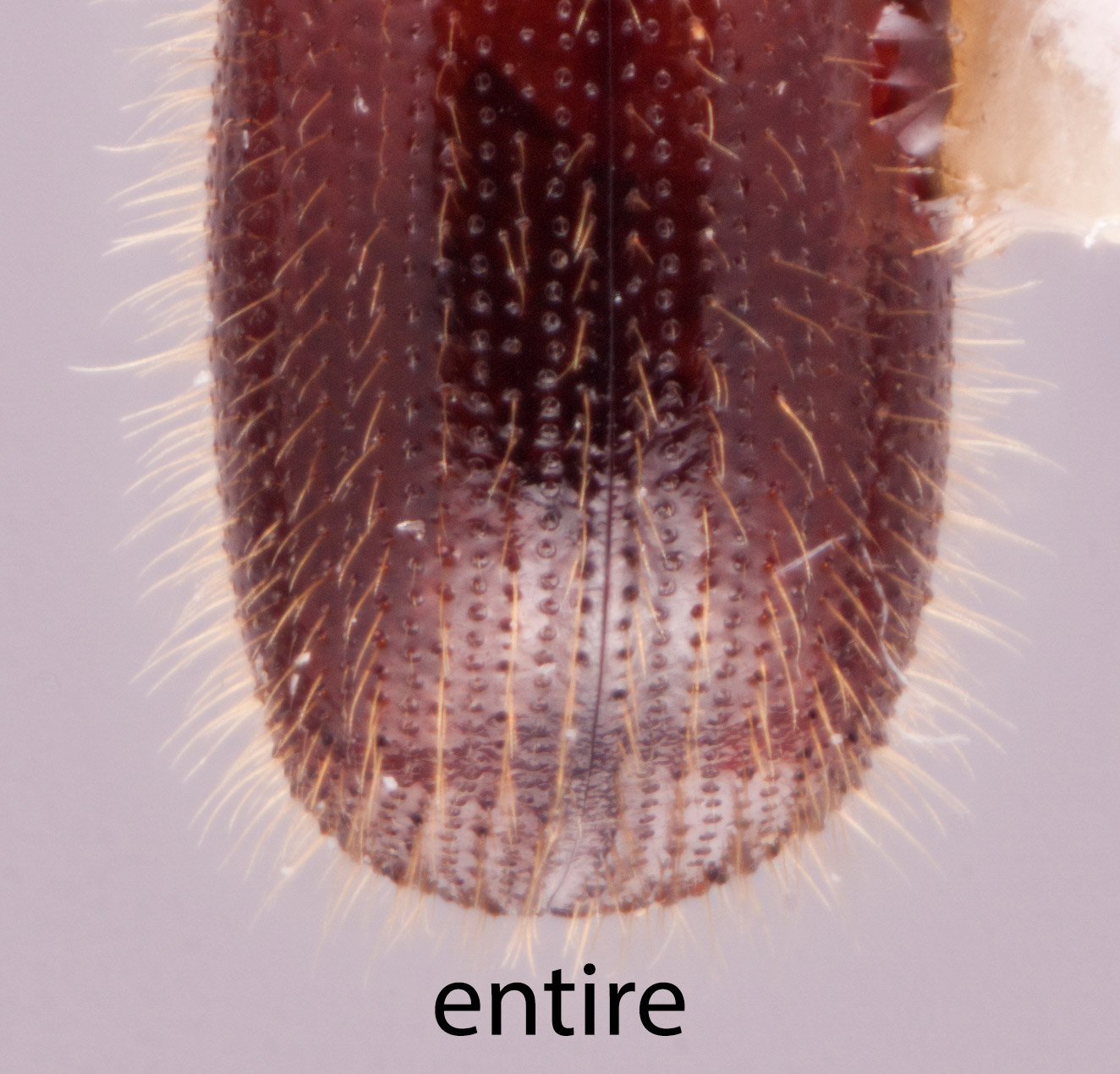 . Ambrosiophilus can be recognized by the pronotumpronotum:
. Ambrosiophilus can be recognized by the pronotumpronotum:
the dorsal surface of the thorax
anterioranterior:
the front or forward; opposite of posterior margin typically without a carinacarina:
margin typically without a carinacarina:
an elevated ridge or keel, not necessarily high or acute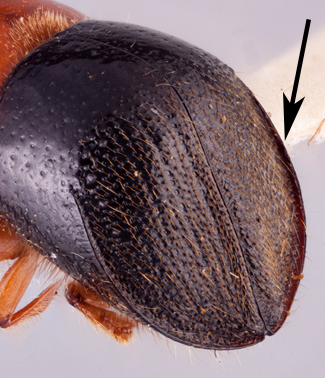 or serrations; pronotal discdisc:
or serrations; pronotal discdisc:
the flat central upper surface of any body part (e.g. pronotum and elytra) punctate; elytral declivitydeclivity:
punctate; elytral declivitydeclivity:
downward slope of either the pronotum or elytra
 rounded and steep; antennal clubclub:
rounded and steep; antennal clubclub:
the broadened, flattened end of antenna, in Xyleborini comprised of three segments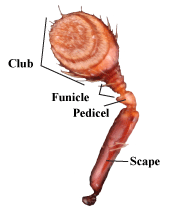 types 3 and 4; scutellum flat, flush with elytra; mycangial tufts absent; and procoxae contiguous. Ambrosiophilus most closely resembles Ambrosiodmus and is distinguished by the pronotalpronotal:
types 3 and 4; scutellum flat, flush with elytra; mycangial tufts absent; and procoxae contiguous. Ambrosiophilus most closely resembles Ambrosiodmus and is distinguished by the pronotalpronotal:
pertaining to the pronotum
discdisc:
the flat central upper surface of any body part (e.g. pronotum and elytra) and laterallateral:
and laterallateral:
pertaining to the side
 areas punctatepunctate:
areas punctatepunctate:
set with fine impressed points, appearing as pin pricks
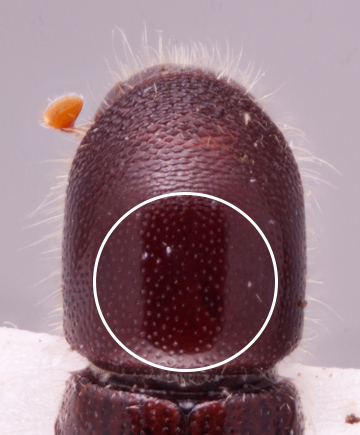 , never asperateasperate:
, never asperateasperate:
covered in asperities , and laterallateral:
, and laterallateral:
pertaining to the side
 profiles of pronotalpronotal:
profiles of pronotalpronotal:
pertaining to the pronotum
and elytralelytral:
pertaining to the elytra
discs flat.
May be confused with
Distribution
Found in temperate and tropical Asia; two species are established in the United States (Gomez et al. 2018).
Gallery system
similar to Ambrosiodmus
Remarks
The species are believed to use the same basidiomycete white-rot fungus as Ambrosiodmus (Kasson et al. 2016Kasson et al. 2016:
Kasson MT, Wickert KL, Stauder CM, Macias AM, Berger MC, Simmons DR, Short DPG, DeVallance DB, Hulcr J. 2016. Mutualism with aggressive wood-degrading Flavodon ambrosius (Polyporales) facilitates niche expansion and communal social structure in Ambrosiophilus ambrosia beetles. Fungal Ecology 23: 86-96. https://doi.org/10.1016/j.funeco.2016.07.002, Li et al. 2017Li et al. 2017:
Li Y, Bateman CC, Skelton J, Jusino MA, Nolen ZJ, Simmons DR, Hulcr J. 2017. Wood decay fungus Flavodon ambrosius (Basidiomycota: Polyporales) is widely farmed by two genera of ambrosia beetles. Fungal Biology 121: 984-989. https://doi.org/10.1016/j.funbio.2017.08.004). Some species are mycocleptic (Hulcr and Cognato 2010bHulcr and Cognato 2010b:
Hulcr J, Cognato AI. 2010b. Repeated evolution of theft in fungus farming ambrosia beetles. Evolution 64: 3205-3212. https://doi.org/10.1111/j.1558-5646.2010.01055.x). The female starts its gallery close to galleries of other ambrosia beetles. The fungus established by the ‘host’ species grows in the galleries of Ambrosiophilus which consequently has no need to transport its own ambrosia fungus, and lacks mycangiamycangia:
structures used to carry fungal symbionts; highly morphologically variable
 (Hulcr and Cognato 2010bHulcr and Cognato 2010b:
(Hulcr and Cognato 2010bHulcr and Cognato 2010b:
Hulcr J, Cognato AI. 2010b. Repeated evolution of theft in fungus farming ambrosia beetles. Evolution 64: 3205-3212. https://doi.org/10.1111/j.1558-5646.2010.01055.x, Kasson et al. 2016Kasson et al. 2016:
Kasson MT, Wickert KL, Stauder CM, Macias AM, Berger MC, Simmons DR, Short DPG, DeVallance DB, Hulcr J. 2016. Mutualism with aggressive wood-degrading Flavodon ambrosius (Polyporales) facilitates niche expansion and communal social structure in Ambrosiophilus ambrosia beetles. Fungal Ecology 23: 86-96. https://doi.org/10.1016/j.funeco.2016.07.002).

